In many circumstances debts from foreclosure survive. Lenders and zombie debt collectors are waiting for better days to start collection efforts.
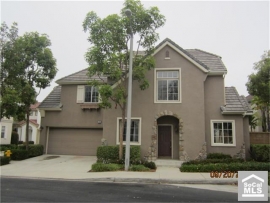
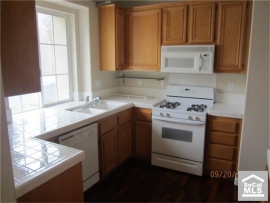
Irvine Home Address … 68 DANBURY Ln Irvine, CA 92618
Resale Home Price …… $484,900

If you, if you could return,
don't let it burn,
don't let it fade.
It's tearing me apart,
It's ruining everything.
Do you have to let it linger?
Do you have to,
do you have to,
Do you have to let it linger?
Cranberries — Linger
Most people who leave their houses behind under duress believe they have no liability. Even the ones who suspect they might will generally duck their lender's calls and letters and hope the problem goes away on its own. It won't.

California recently passed legislation barring lenders from seeking collection on deficiencies after a short sale. Of course, this has merely contributed to the already slow pace of short sale approvals. California borrowers already had non-recourse protections on purchase-money mortgages, and there are statutory limits on collecting debts severed from the property in foreclosure.
I think these are good policies in California. Perhaps lenders will be more cautious next time when they want to extend stupid loans to California Ponzis. Although, as long as the government will bail stupid lenders out, they don't have much incentive to be wise with their lending.
The rest of the country is more of an issue with debt overhang, and zombie debt collection will be a thriving industry.

House Is Gone but Debt Lives On
By JESSICA SILVER-GREENBERG — October 1, 2011
LEHIGH ACRES, Fla.—Joseph Reilly lost his vacation home here last year when he was out of work and stopped paying his mortgage. The bank took the house and sold it. Mr. Reilly thought that was the end of it.
In June, he learned otherwise. A phone call informed him of a court judgment against him for $192,576.71.
It turned out that at a foreclosure sale, his former house fetched less than a quarter of what Mr. Reilly owed on it. His bank sued him for the rest.
The result was a foreclosure hangover that homeowners rarely anticipate but increasingly face: a “deficiency judgment.“
It's human nature to avoid responsibility, particularly when the consequences are devastating. Who wouldn't rather bury their face in the sand than deal with a six-figure debt?
Forty-one states and the District of Columbia permit lenders to sue borrowers for mortgage debt still left after a foreclosure sale. The economics of today's battered housing market mean that lenders are doing so more and more.
Foreclosed homes seldom fetch enough to cover the outstanding loan amount, both because buyers financed so much of the purchase price—up to 100% of it during the housing boom—and because today's foreclosures take place following a four-year decline in values.

“Now there are foreclosures that leave banks holding the bag on more than $100,000 in debt,” says Michael Cramer, president and chief executive of Dyck O'Neal Inc., an Arlington, Texas, firm that invests in debt. “Before, it didn't make sense [for banks] to expend the resources to go after borrowers; now it doesn't make sense not to.”
 Banks won't staff up to try to collect bad debt. They will sell this debt to some firm who operates under that business model. It didn't make sense for banks to try to collect this debt before because they still showed it on their balance sheets at full value. As they abandon their fantasies and adjust their accounting to reflect reality, they have to deal with the bad debt. The rise of the zombie debt collector should have happened years ago, but with mark-to-fantasy accounting, banks were able to delay the inevitable.
Banks won't staff up to try to collect bad debt. They will sell this debt to some firm who operates under that business model. It didn't make sense for banks to try to collect this debt before because they still showed it on their balance sheets at full value. As they abandon their fantasies and adjust their accounting to reflect reality, they have to deal with the bad debt. The rise of the zombie debt collector should have happened years ago, but with mark-to-fantasy accounting, banks were able to delay the inevitable.
Indeed, $100,000 was roughly the average amount by which foreclosure sales fell short of loan balances in hundreds of foreclosures in seven states reviewed by The Wall Street Journal. And 64% of the 4.5 million foreclosures since the start of 2007 have taken place in states that allow deficiency judgments.
Lenders still sue for loan shortfalls in only a small minority of cases where they legally could. Public relations is a limiting factor, some debt-buyers believe. Banks are reluctant to discuss their strategies, but some lenders say they are more likely to seek a deficiency judgment if they perceive the borrower to be a “strategic defaulter” who chose to stop paying because the property lost so much value.
Lenders will certainly say they are more likely to go after strategic defaulters because they are frightened about how common and accepted the practice has become. The reality is that very few defaulters, strategic or otherwise, are currently being pursued.
In Lee County, Fla., where Mr. Reilly's vacation home was, court records show that 172 deficiency judgments were entered in the first seven months of 2011. That was up 34% from a year earlier. The increase was especially striking because total foreclosures were down sharply in the county, as banks continued to wrestle with paperwork problems that slowed the process.
One Florida lawyer who defends troubled homeowners, Matt Englett of Orlando, says his clients have faced 20 deficiency-judgment suits this year, up from seven during all of last year.
Until recently, “there was a false sense of calm” among borrowers who went through foreclosure, Mr. Englett says. “That's changing,” he adds, as borrowers learn they may be financially on the hook even after the house is gone.

In Mr. Reilly's case, “there's not a snowball's chance in hell that we can pay” the deficiency judgment, says the 39-year-old man, who remains unemployed. He says he is going to speak to a lawyer about declaring bankruptcy next week, in an effort to escape the debt. The lender that obtained the judgment against him, Great Western Bank Corp. of Sioux Falls, S.D., declined to comment.
First, bankruptcy doesn't “escape” debt, it extinguishes it. Banktruptcy is the likely river card most borrowers will have to play. Bankruptcy is a fresh start, and each borrower who goes through it gains the peace of mind of knowing the debts are eliminated for good. 
It is surprising a bank would seek a judgement against an unemployed borrower with no assets — I assume he has no assets from the comments in the story. It's a waste of bank resources to attempt collection.
Some close observers of the housing scene are convinced this is just the beginning of a surge in deficiency judgments.
In states other than Califronia, this is likely true. Why wouldn't banks try to recoup their money? No lender has forgotten about a debt. If they haven't issued a 1099, they still have this debt on their books. At some point, either they will try to collect, or they will sell this debt to someone who will.
Sharon Bock, clerk and comptroller of Palm Beach County, Fla., expects “a massive wave of these cases as banks start selling the judgments to debt collectors.”
In a paradox of the battered housing industry, trying to squeeze more money out of distressed borrowers contrasts with other initiatives that aim instead to help struggling homeowners, including by reducing what they owe.
There are no initiatives from banks trying to reduce what anyone owes. There are political pandering noises being made to this end, but the people who control the debt are uniform in their desire to colllect the full amount due.
The increase in deficiency judgments has sparked a growing secondary market. Sophisticated investors are “ravenous for this debt and ramping up their purchases,” says Jeffrey Shachat, a managing director at Arca Capital Partners LLC, a Palo Alto, Calif., firm that finances distressed-debt deals. He says deficiency judgments will eventually be bundled into packages that resemble mortgage-backed securities.
Because most targets have scant savings, the judgments sell for only about two cents on the dollar, versus seven cents for credit-card debt, according to debt-industry brokers.
If buyers are only paying two cents on a dollar, they don't have to recover much from many people to recoup their investment. Most debt collectors can obtain that much through harrassing phone calls.
Silverleaf Advisors LLC, a Miami private-equity firm, is one investor in battered mortgage debt. Instead of buying ready-made deficiency judgments, it buys banks' soured mortgages and goes to court itself to get judgments for debt that remains after foreclosure sales.
Silverleaf says its collection efforts are limited. “We are waiting for the economy to somewhat heal so that it's a better time to go after people,” says Douglas Hannah, managing director of Silverleaf.
These debt collectors are biding their time until people are back on their feet before they knock them down again. This is why bankruptcy immediately following a foreclosure is a better course of action. Many borrowers who think they dodged taking responsibility for their bubble era debts will be rudely surprised by the collection efforts of these zombie debt collectors.
Investors know that most states allow up to 20 years to try to collect the debts, ample time for the borrowers to get back on their feet. Meanwhile, the debts grow at about an 8% interest rate, depending on the state.
That will push many people into bankruptcy years down the road. Those people will regret their failure to deal with the debt problem right after their foreclosure. Bankruptcy hurts less when they're already broke.
Mr. Hannah expects the market to expand as banks “aggressively unload” their distressed mortgages in the next year, driving up the number of deficiency judgments being sought.
They are pretty easy to get. “If the house sold for less than you owe, the lender wins, plain and simple,” says Roy Foxall, a real-estate lawyer in Fort Myers on Florida's west coast.
Mr. Foxall says five deficiency suits were filed against his clients this year, and he couldn't poke any holes in any of them. Lenders typically have five years following a foreclosure sale to sue for remaining mortgage debt.
Nevada recently passed a law reducing this time period to 9 months. In California, lenders can still try to collect after a foreclosure, but a first mortgage lien cannot file another lawsuit to compel repayment as the foreclosure itself was their one remedy.
Mr. Englett, the Orlando lawyer who has handled 27 such suits for homeowners in the past 21 months, says he didn't get the bank to waive the deficiency in any of the cases, but did reach six settlements in which the plaintiff accepted less.
Florida is among the biggest deficiency-judgment states. Since the start of 2007, it has had more foreclosures than any other state that allows deficiency judgments—more than 9% of the U.S. total, according to research firm Lender Processing Services Inc.
A loan-deficiency suit can yank borrowers back to a nightmare they thought was over.
Ray Falero, a truck driver whose Orlando home was foreclosed on and sold in August 2010, says he thought he was hallucinating when, months later, he opened the door and saw a sheriff's deputy. The visitor handed him a notice saying he was being sued for $78,500 by the lender on the home purchase, EverBank Financial Corp., of Jacksonville, Fla.
“I thought I was done with this whole mess,” he says.
Most borrowers make this mistake.
Mr. Falero, 37, says he was about nine months behind on his loan when the bank foreclosed. Before it did, he bought another home in Minneola, Fla., where he now lives and where he says he is up to date on mortgage payments. Like Mr. Reilly, Mr. Falero says he didn't swell the foreclosed-on loan through refinancing or home-equity borrowing.
EverBank won a deficiency judgment on Mr. Falero's Orlando loan. Mr. Falero and his lawyer are fighting to reduce the amount owed. EverBank declined to comment on his case.
Credit unions and smaller banks are the most aggressive pursuers of deficiency judgments, a review of court records in several states shows.
At Suncoast Schools Federal Credit Union in Tampa, Jim Simon, manager of loss and risk mitigation, says the institution has a responsibility to its members, and that means trying to recoup losses by going after loan deficiencies. He calls such legal action the credit union's “last arrow in the quiver.”
If the bank is not too big to fail, it must go after every penny just to survive.
The biggest banks appear to have stayed largely on the sidelines as they deal with the foreclosure-paperwork mess. One big bank, J.P. Morgan Chase & Co., “may obtain a deficiency” judgment in foreclosure cases but will “often waive” the leftover debt when a homeowner agrees to a so-called short sale of a house for less than is owed on it, a bank spokesman says. …
The hard-hit area reveals a sharp contrast in homeowners' attitudes toward deficiency judgments.
Julia Ingham invested in four Lehigh Acres properties in June 2005, hoping to “drum up some real money for retirement.”
All have since been foreclosed on by lenders, says the 62-year-old retired programmer for International Business Machines Corp.

A credit union, after selling one of the foreclosed houses for less than the debt on it, obtained a deficiency judgment against Ms. Ingham for $181,059.54. She worries she could face such judgments on the other properties, too.
Ms. Ingham says when she bought them, she misunderstood how much her investments put her on the hook for. Her builder, she says, promised she could invest $10,000 in four properties and then flip them for a profit. Ms. Ingham says deficiency judgments punish borrowers who were taken advantage of by lenders and builders.
Taken advantage of? Does she bear no responsibility for her own stupidity?

Catherine Ortega, who owns a Lehigh Acres home around the corner from one of Ms. Ingham's foreclosed homes, says banks should leave people like her former neighbor alone. “Those people have suffered enough,” she says.
If they have suffered enough, they should declaure bankruptcy. Borrowers shouldn't rely on the compassion of banks because the banks won't have any.
In July 2005, Mr. Reilly took out a $223,000 mortgage to build a vacation home here, about 160 miles from his primary home in Odessa, Fla. He was laid off just as construction was being completed.
Mr. Reilly says he is current on the loan on his primary residence but couldn't afford the vacation home's $1,200-a-month loan payment. Great Western Bank, which is owned by National Australia Bank Ltd., foreclosed on his house in Lehigh Acres in July 2010.
Mr. Reilly, who was a mortgage broker before his layoff, says he knew that deficiency judgments were possible after a foreclosure but didn't expect to face one because he doesn't have any financial assets, and you can't get “blood from a stone.”
I am surprised he is facing a deficiency judgment considering he has no income or assets.
Alfredo Callado, who lives next door to Mr. Reilly's former house, is unsympathetic. Like Ms. Ortega, Mr. Callado is troubled by the crime that a neighborhood full of empty houses attracts. He started watching over Mr. Reilly's former house to ward off thieves who steal air conditioners from vacant properties.
Mr. Callado, sitting on a lawn chair in his driveway, says lenders should use deficiency suits to punish defaulting homeowners for the damage they do to neighborhoods, including driving down property values.
“You have to make them pay for what they do to those of us left behind,” he says.
WTF? This guy is upset because people couldn't afford the debt used to drive up neighborhood property values, and now he has to accept the reality that his house was never worth what he thought it was. Too bad. Vindication will not soothe his soul. What circle of hell would he want defaulting homeowners to end up in?

They didn't get enough
The former owners of today's featured properties did lose this home due to excessive borrowing, but the clearly left money in the walls they could have extracted during the bubble. The bank might not lose money on this one.
- The property was purchased on 11/24/1999 for $258,000. The owners used a $206,350 first mortgage and a $51,650 down payment.
- On 4/4/2003 they refinanced with a $230,000 first mortgage, but they took out very little extra money.
- On 2/1/2007 they refinanced again with a $428,000 first mortgage which was likely only 80% of the value at the time. They could have obtained a second for over $100,000 and didn't. I wonder if they wished they had.
- The details aren't in my records, but they defaulted on the loan, and Wells Fargo took the property back on 4/1/2011 for $481,337.
Lenders are very selective in who they foreclose on. They selected these borrowers because they were near breakeven. Wells could foreclose on them without losing much money. It makes sense for banks to foreclose on non-performing loans when the losses are small to clean up their books. It's the severely underwater loans where they allow the owners to squat endlessly because they don't want to recognize the losses.
If these borrowers had been more irresponsible, they would likely still be living in this house making no payments. That doesn't create a good set of borrower incentives, does it?
——————————————————————————————————————————————-
This property is available for sale via the MLS.
Please contact Shevy Akason, #01836707
949.769.1599
sales@idealhomebrokers.com



Irvine House Address … 68 DANBURY Ln Irvine, CA 92618
Resale House Price …… $484,900
Beds: 3
Baths: 2
Sq. Ft.: 1350
$359/SF
Property Type: Residential, Condominium
Style: Two Level, Traditional
Year Built: 1999
Community: Oak Creek
County: Orange
MLS#: P798732
Source: SoCalMLS
Status: Active
On Redfin: 2 days
——————————————————————————
FANTASTIC BUY ON THIS IMMACULATE 3 BD 2.5 BA DETACHED HOME VALUE PRICED FOR QUICK SALE! FRESH INTERIOR TWO-TONE PAINT AND NEW CARPET. FORMAL LIVING ROOM WITH FIREPLACE, BEAUTIFUL WOOD FLOORS, BRIGHT KITCHEN WITH TILED COUNTERTOPS, PRIVATE PATIO FOR ENTERTAINING, SPACIOUS MASTER SUITE WITH WALK-IN CLOSET, MASTER BATHROOM WITH DUAL SINK VANITY, BEDROOMS 2 & 3 (JACK-N-JILL) WITH SHARED BATHROOM AND DUAL SINK VANITY, FORCED AIR HEATING AND CENTRAL AIR CONDITIONING, 2 CAR ATTACHED GARAGE PLUS FULL DRIVEWAY FOR ADDITIONAL PARKING. SUPER MOTIVATED SELLER. SUBMIT!!!
BRIGHT KITCHEN WITH TILED COUNTERTOPS, PRIVATE PATIO FOR ENTERTAINING, SPACIOUS MASTER SUITE WITH WALK-IN CLOSET, MASTER BATHROOM WITH DUAL SINK VANITY, BEDROOMS 2 & 3 (JACK-N-JILL) WITH SHARED BATHROOM AND DUAL SINK VANITY, FORCED AIR HEATING AND CENTRAL AIR CONDITIONING, 2 CAR ATTACHED GARAGE PLUS FULL DRIVEWAY FOR ADDITIONAL PARKING. SUPER MOTIVATED SELLER. SUBMIT!!!
——————————————————————————————————————————————-
Proprietary IHB commentary and analysis ![]()
Resale Home Price …… $484,900
House Purchase Price … $258,000
House Purchase Date …. 11/24/1999
Net Gain (Loss) ………. $197,806
Percent Change ………. 76.7%
Annual Appreciation … 5.3%
Cost of Home Ownership
————————————————-
$484,900 ………. Asking Price
$16,972 ………. 3.5% Down FHA Financing
4.03% …………… Mortgage Interest Rate
$467,928 ………. 30-Year Mortgage
$133,179 ………. Income Requirement
$2,242 ………. Monthly Mortgage Payment
$420 ………. Property Tax (@1.04%)
$0 ………. Special Taxes and Levies (Mello Roos)
$101 ………. Homeowners Insurance (@ 0.25%)
$538 ………. Private Mortgage Insurance
$139 ………. Homeowners Association Fees
============================================
$3,440 ………. Monthly Cash Outlays

-$349 ………. Tax Savings (% of Interest and Property Tax)
-$671 ………. Equity Hidden in Payment (Amortization)
$24 ………. Lost Income to Down Payment (net of taxes)
$81 ………. Maintenance and Replacement Reserves
============================================
$2,526 ………. Monthly Cost of Ownership
Cash Acquisition Demands
——————————————————————————
$4,849 ………. Furnishing and Move In @1%
$4,849 ………. Closing Costs @1%
$4,679 ………… Interest Points @1% of Loan
$16,972 ………. Down Payment
============================================
$31,349 ………. Total Cash Costs
$38,700 ………… Emergency Cash Reserves
============================================
$70,049 ………. Total Savings Needed
——————————————————————————————————————————————————-
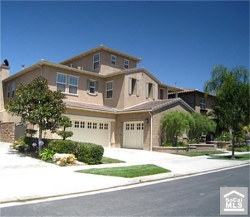



 Observers of the high end market often see what they want to see. Most homeowners in these price ranges truly believe the reason their prices haven't decayed to date is because everyone is rich and there is little mortgage distress. Nothing could be further from the truth.
Observers of the high end market often see what they want to see. Most homeowners in these price ranges truly believe the reason their prices haven't decayed to date is because everyone is rich and there is little mortgage distress. Nothing could be further from the truth.

 The orginal buyers were hopelessly overextended. They paid $1,434,000 on 11/3/2005 using a $1,145,000 first mortgage, and $145,000 HELOC, and a $144,000 down payment. Since you can't deduct the interest on a loan over $1,000,000, the only people who borrowed more than $1,000,000 did so because they had to.
The orginal buyers were hopelessly overextended. They paid $1,434,000 on 11/3/2005 using a $1,145,000 first mortgage, and $145,000 HELOC, and a $144,000 down payment. Since you can't deduct the interest on a loan over $1,000,000, the only people who borrowed more than $1,000,000 did so because they had to.
.jpg)
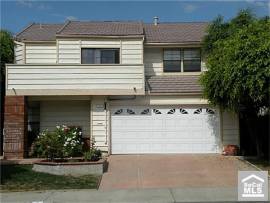





 Pay careful attention to that statistic. Forty-four percent of the first mortgages are underwater. When the first mortgage is underwater, the second mortgage has no value. The lender may be lucky to salvage 5 cents on a dollar from a zombie debt collector. If nearly half of the loans have no value, the other half likely have very little.
Pay careful attention to that statistic. Forty-four percent of the first mortgages are underwater. When the first mortgage is underwater, the second mortgage has no value. The lender may be lucky to salvage 5 cents on a dollar from a zombie debt collector. If nearly half of the loans have no value, the other half likely have very little.

.jpg) A GORGEOUS HOME IN AN IDEAL LOCATION!!! Downstair bedroom & bath room. It even has an office/library downstairs. 4 Bedroom+Bonus Room or 5th Bedroom with full 3 Baths. Highly UPGRADED with SHOWS GREAT with remodeled kitchen featuring granite counters, maple cabinets, crown & base moulding , recessed lightings, , CUSTOM PAINT, UPGRADED hardwood floor. SPACIOUS LR offers high ceilings with hardwood floor, skylight, fireplace. Newer A/C unit & salt purified water system for your faimily. A VERY unique home in a great association and only steps to the association pool and 2 night lighted tennis courts. Northwood High School District too!!! NICE CURB APPLEAL, BE THE ONE TO DO YOUR OWN UPGRADES IN THIS VERY DESIERABLE AND OPEN FLOORPLAN. LOW ASSOCIATION AND NO MELLOOROOS. WHAT A DEAL !! HURRY MOTIVATED TO SELL , EQUITY SELLER NEEDS AN OFFER NOW!! CAN CLOSE FAST
A GORGEOUS HOME IN AN IDEAL LOCATION!!! Downstair bedroom & bath room. It even has an office/library downstairs. 4 Bedroom+Bonus Room or 5th Bedroom with full 3 Baths. Highly UPGRADED with SHOWS GREAT with remodeled kitchen featuring granite counters, maple cabinets, crown & base moulding , recessed lightings, , CUSTOM PAINT, UPGRADED hardwood floor. SPACIOUS LR offers high ceilings with hardwood floor, skylight, fireplace. Newer A/C unit & salt purified water system for your faimily. A VERY unique home in a great association and only steps to the association pool and 2 night lighted tennis courts. Northwood High School District too!!! NICE CURB APPLEAL, BE THE ONE TO DO YOUR OWN UPGRADES IN THIS VERY DESIERABLE AND OPEN FLOORPLAN. LOW ASSOCIATION AND NO MELLOOROOS. WHAT A DEAL !! HURRY MOTIVATED TO SELL , EQUITY SELLER NEEDS AN OFFER NOW!! CAN CLOSE FAST 
.png)

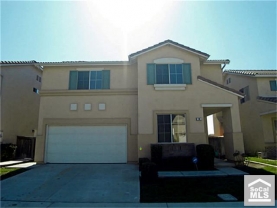
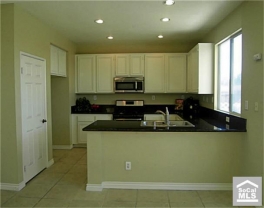










 they obtained a $424,750 HELOC. There is no way to be certain how much of this they took out and spent, but since they defaulted and lost the house in foreclosure, it must have been a signifant amount.
they obtained a $424,750 HELOC. There is no way to be certain how much of this they took out and spent, but since they defaulted and lost the house in foreclosure, it must have been a signifant amount.


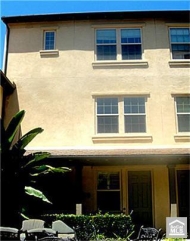
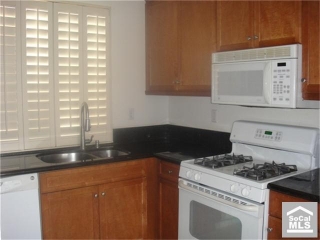





 The median in January 2009 was distorted by the abundance of sales at the low end and a lack of sales at the high end. With the mid to high end beginning to capitulate, the current mix is somewhat more balanced. That being said, the January 2009 median may be revisited this January. With an abundance of inventory, banks like BofA getting more desperate for cash, and the normal cyclical nature of the market, this fall and winter could be very ugly.
The median in January 2009 was distorted by the abundance of sales at the low end and a lack of sales at the high end. With the mid to high end beginning to capitulate, the current mix is somewhat more balanced. That being said, the January 2009 median may be revisited this January. With an abundance of inventory, banks like BofA getting more desperate for cash, and the normal cyclical nature of the market, this fall and winter could be very ugly.





